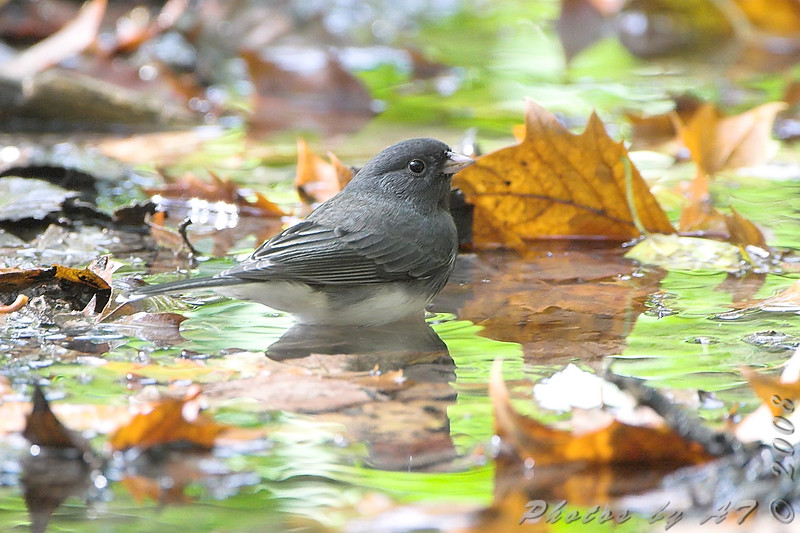Dark-eyed Junco, Junco hyemalis
Bill Rowe
All across Canada and the northernmost eastern states, and also down through the Appalachians and the western mountains, the Dark-eyed Junco is a common breeding bird; its song, a rich, sweet trill, enhances every coniferous forest. By mid-fall, the juncos have begun migrating south, becoming a favorite winter yard bird. Juncos are sparrows, and like the rest of that family they are primarily seed-eaters, with short, conical bills evolved for that function. In the whole United States there are only two species of junco: this one and the Yellow-eyed Junco, a specialty of southern Arizona and New Mexico. The Dark-eyed species, however, occurs in a multiplicity of forms in different segments of its range, from our regular “Slate-colored” Junco in the east to the “Gray-headed” Junco of the Rockies, the “Oregon” Junco of the far West, and more. Some of these forms are quite distinctive, currently classified as subspecies but possibly candidates for “splitting” as full species—the difficulty being that they do interbreed a lot with one another where their ranges meet, and there is no clear understanding of how different they may be genetically. They constitute one of the more complex puzzles in North American bird taxonomy (the study of relationships).
IDENTIFICATION: Our regular eastern “Slate-colored” form is easy to identify—the male all dark gray with a white belly, a pale pink bill, and white outer tail feathers, and the female with a similar pattern but paler gray, often blended with brownish tones. The “Oregon” form, which is rare in Missouri but does show up annually, has a hood of black (male) or darkish gray (female) that is sharply cut off from its rusty-brown sides and back. And you may see all sorts of puzzling intermediate birds that might possibly be western subspecies or intergrades; it’s best to let these go as simply Dark-eyed Juncos.
ST. LOUIS STATUS: Common to abundant, October to April, all over the countryside and in your yard, mostly on the ground below the feeder. As noted above, occasional well-marked “Oregon” juncos can be picked out, but they are vastly outnumbered by the “Slate-colored” form and birds of uncertain origin.
Learn more and listen to the songs and calls of Dark-eyed Juncos here.




